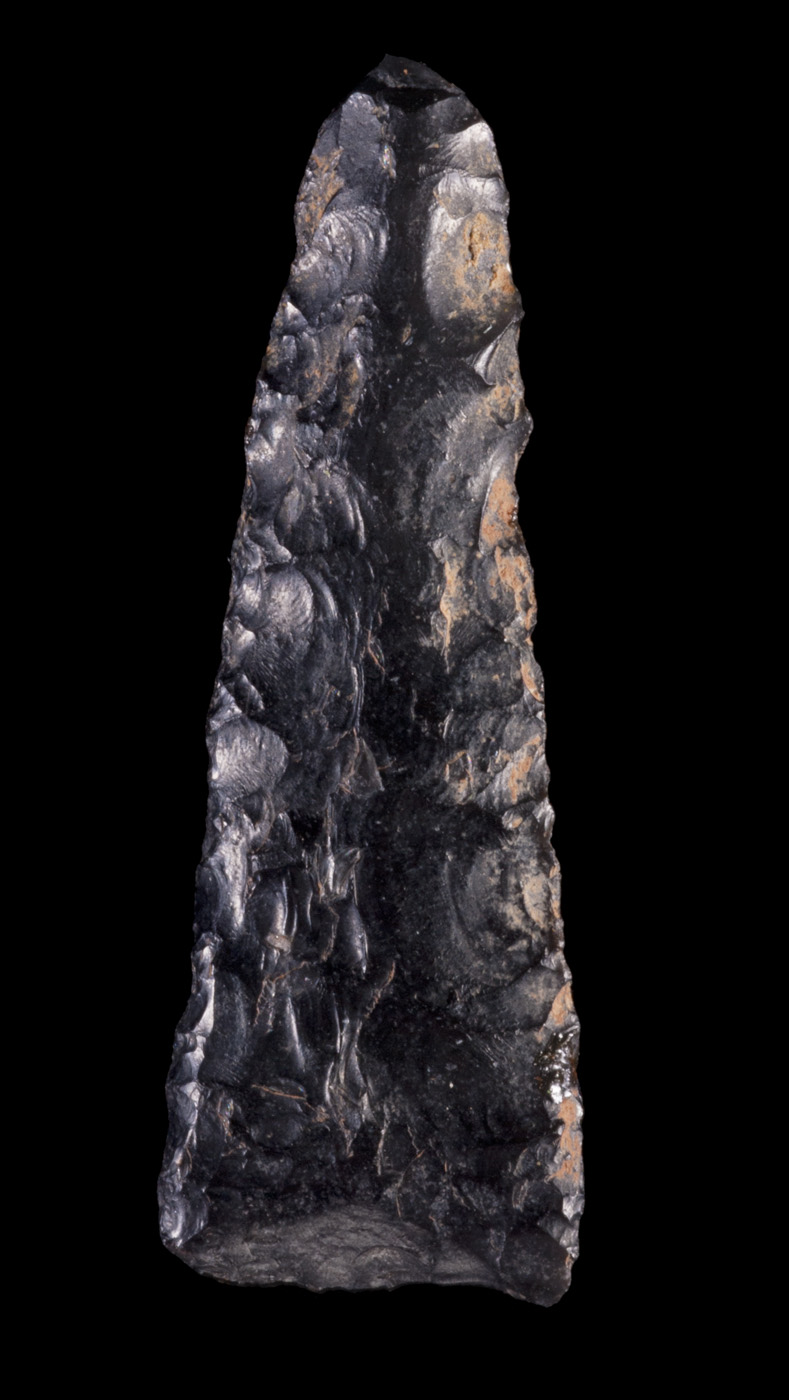Archaeological Culture: Cohonina
Geographical Range: Northwestern Arizona.
Date Range: A.D. 700 – 1150 (Lyndon 2005).
Size: Generally longer than 25 mm (Sliva 2006).
Shape: Elongated, narrow, nearly parallel-sided triangular point with slightly excurvate sides; serrated(most common) or non-serrated; no notches or stem.
Cross-section: Biconvex to nearly diamond-shaped.
Base: Convex, straight, or slightly concave.
Flaking: Pressure; chevron, oblique, or random.
Materials: Obsidian, chalcedony, chert.
Other Names: Cohonina Narrow Contracting, Cohonina Narrow Serrated, Cohonina Lanceolate, Cohonina Short; Red lake Serrated, Red Lake Nonserrated; Coho.
Compiled from the following sources:
Justice, Noel D. (2002) Stone Age Spear and Arrow Points of the Southwestern United States. Indiana University Press, Bloomington.
Lyndon, Michael G. (2005) Projectile Points as Indicators of Preceramic Occupation of the Coconino Plateau. M.A. thesis, Department of Anthropology, Northern Arizona University, Flagstaff.
Sliva, R. Jane. (2006) Projectile Points in Regional Perspective. In Sunset Crater Archaeology: The History of a Volcanic Landscape – Stone, Shell, Bone, and Mortuary Analyses, edited by M. D. Elson, pp 31-64. Anthropological Paper No. 31, Center for Desert Archaeology, Tucson.
Compiled by:
Meghann M. Vance, Northern Arizona University Anthropology Laboratories

